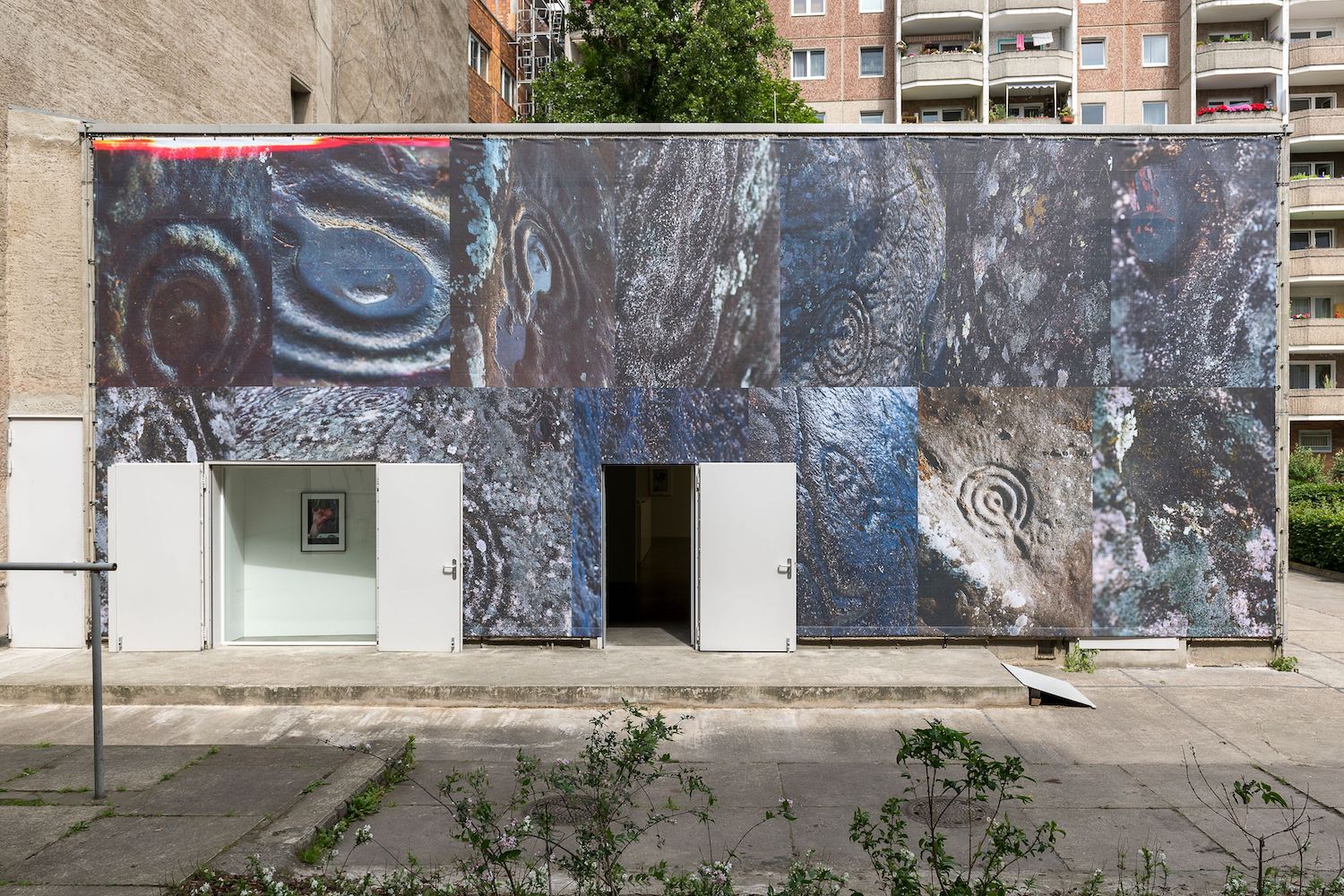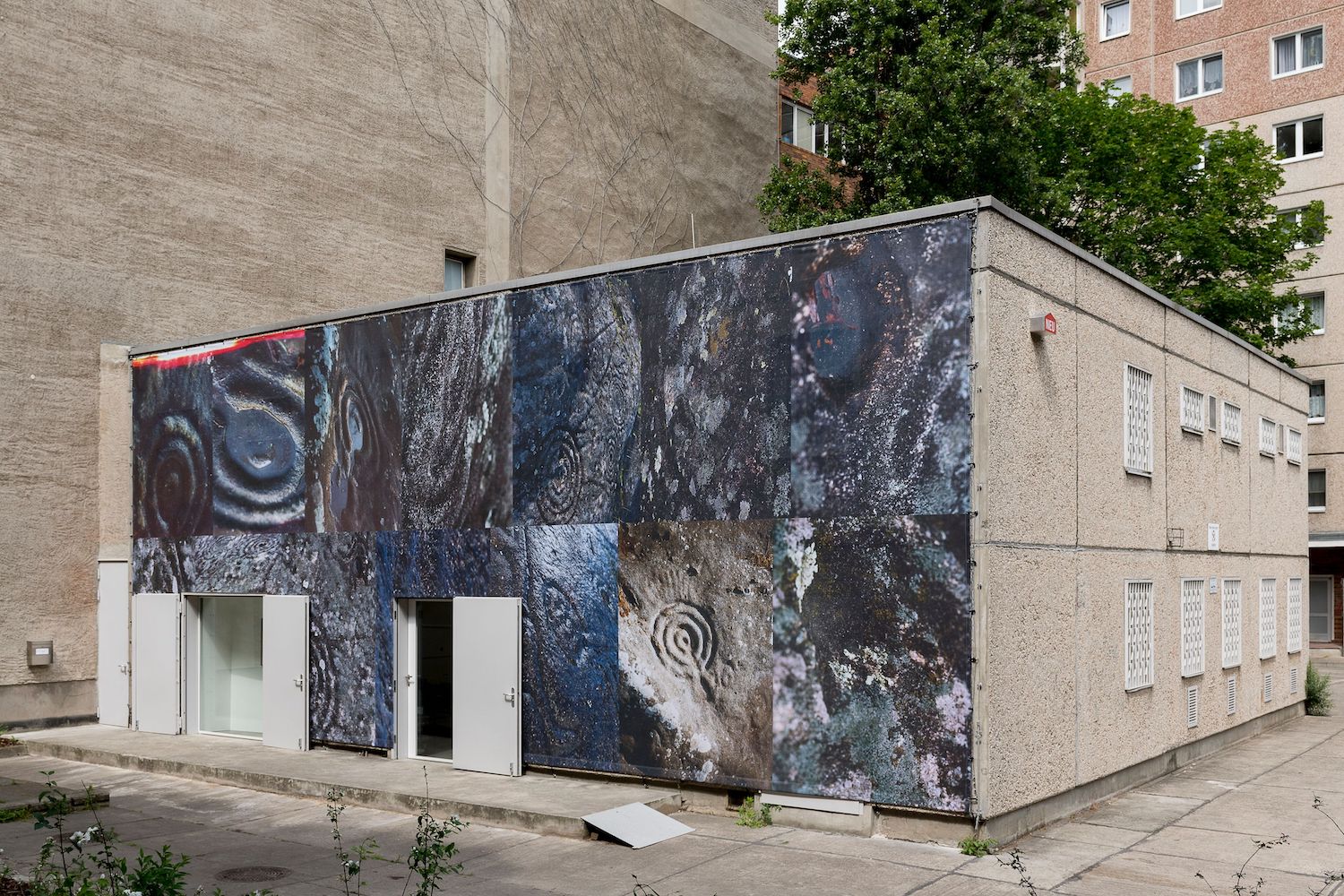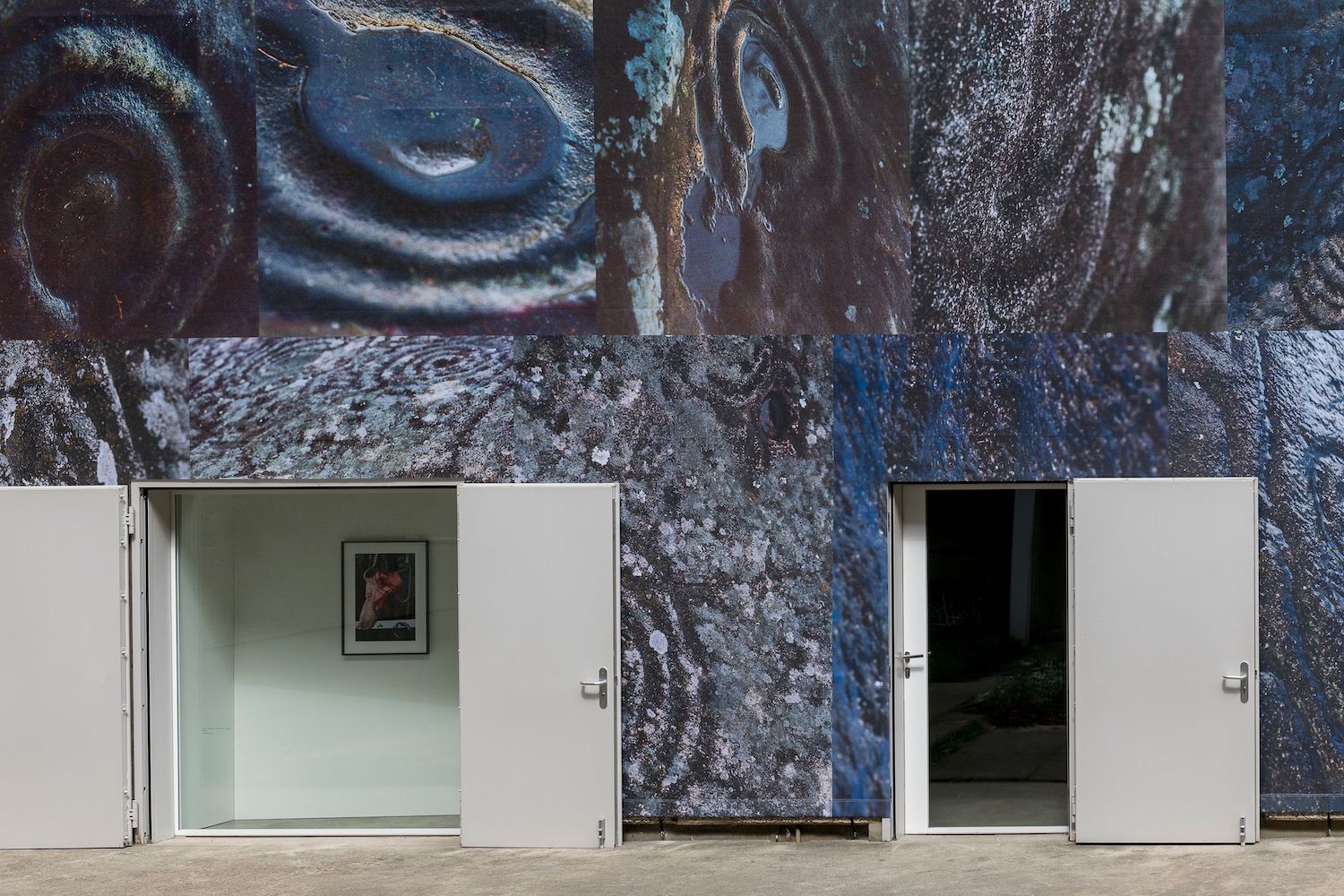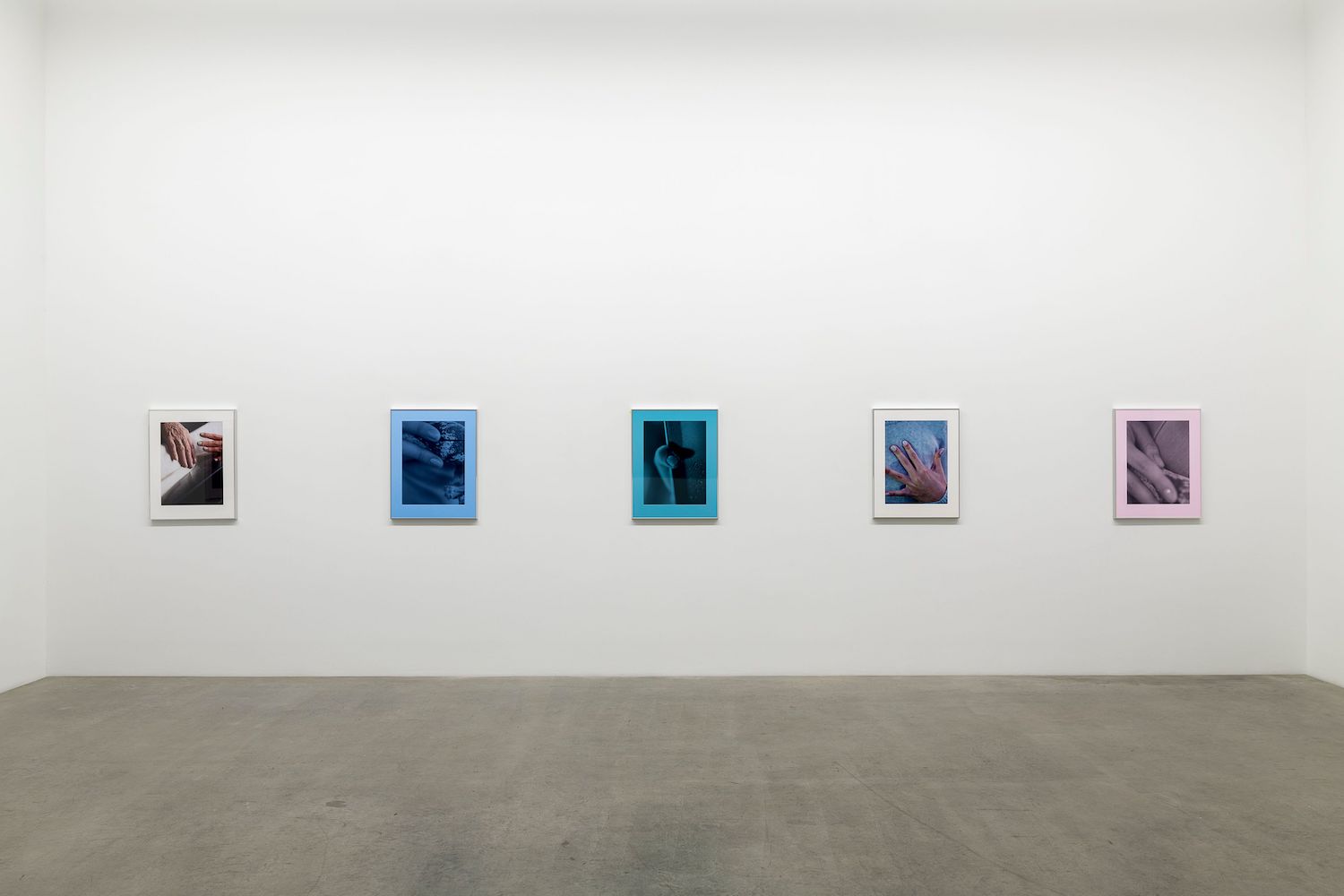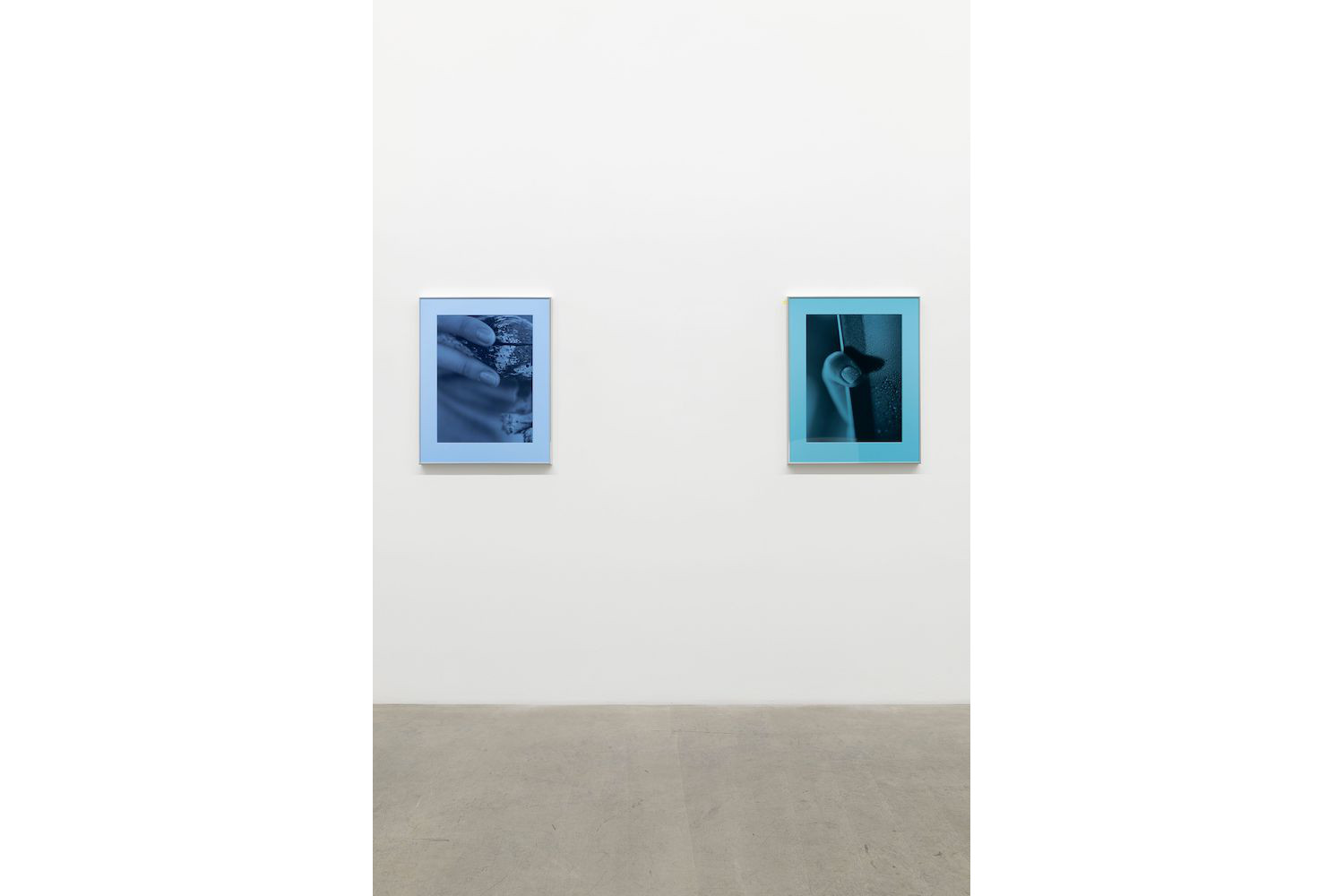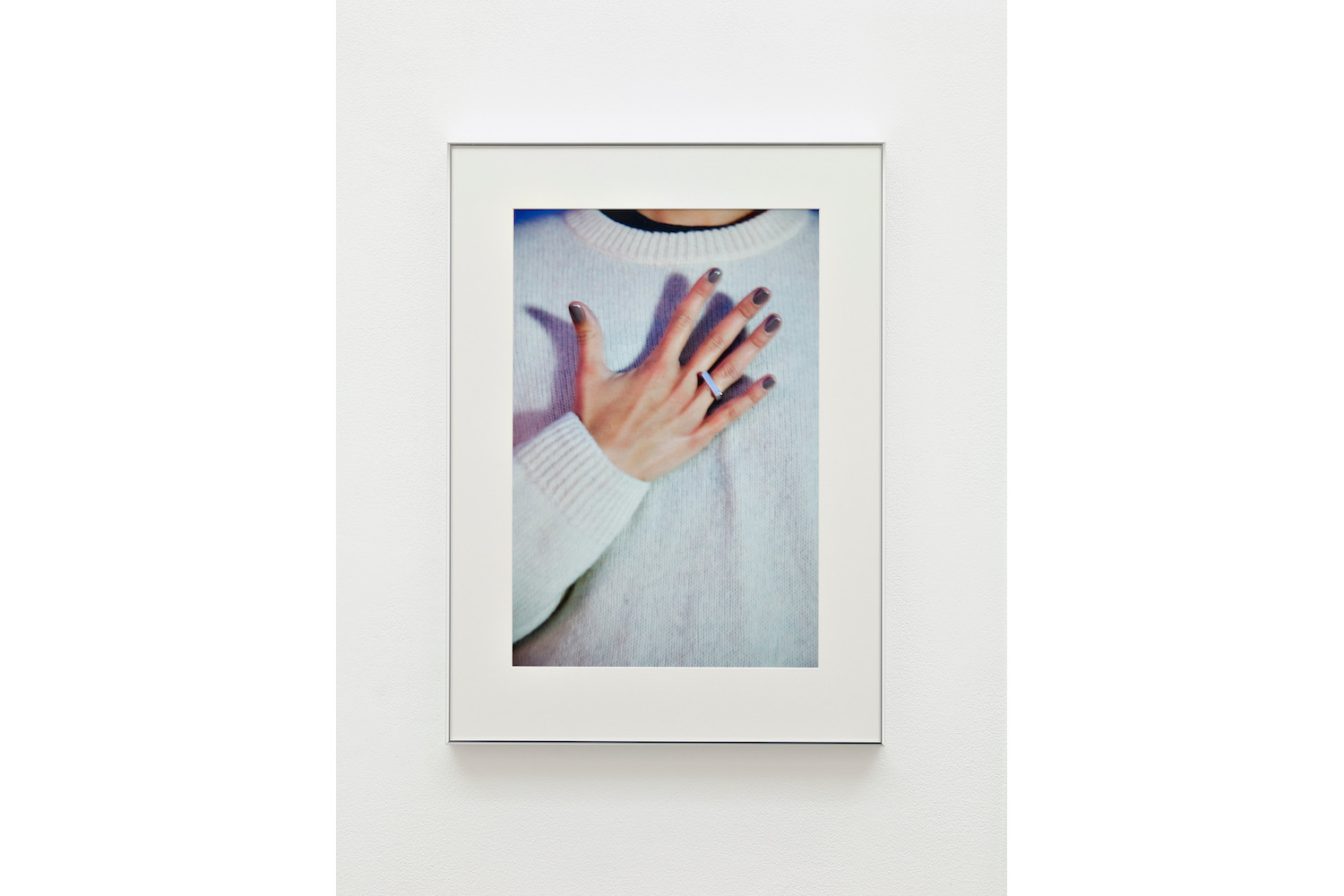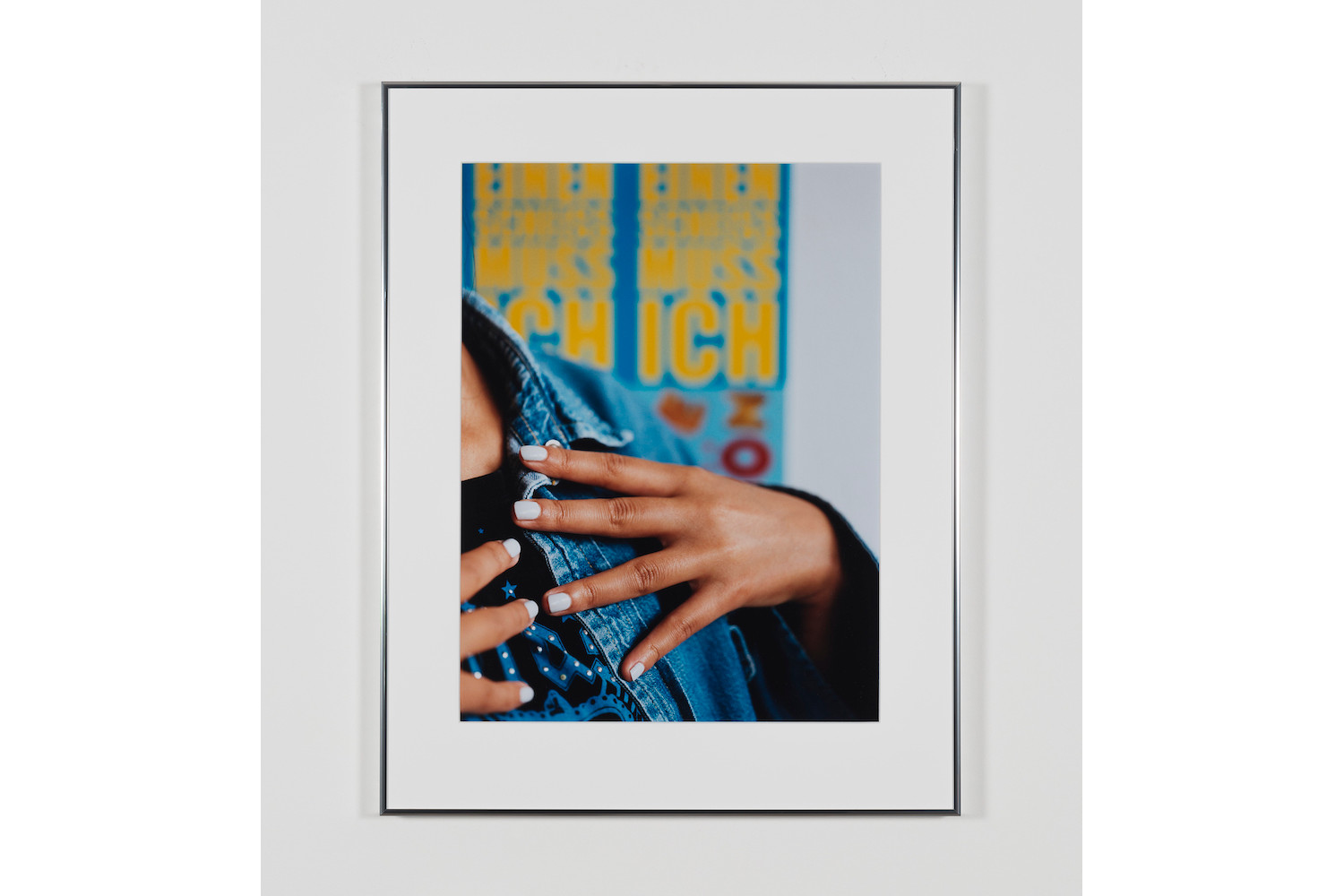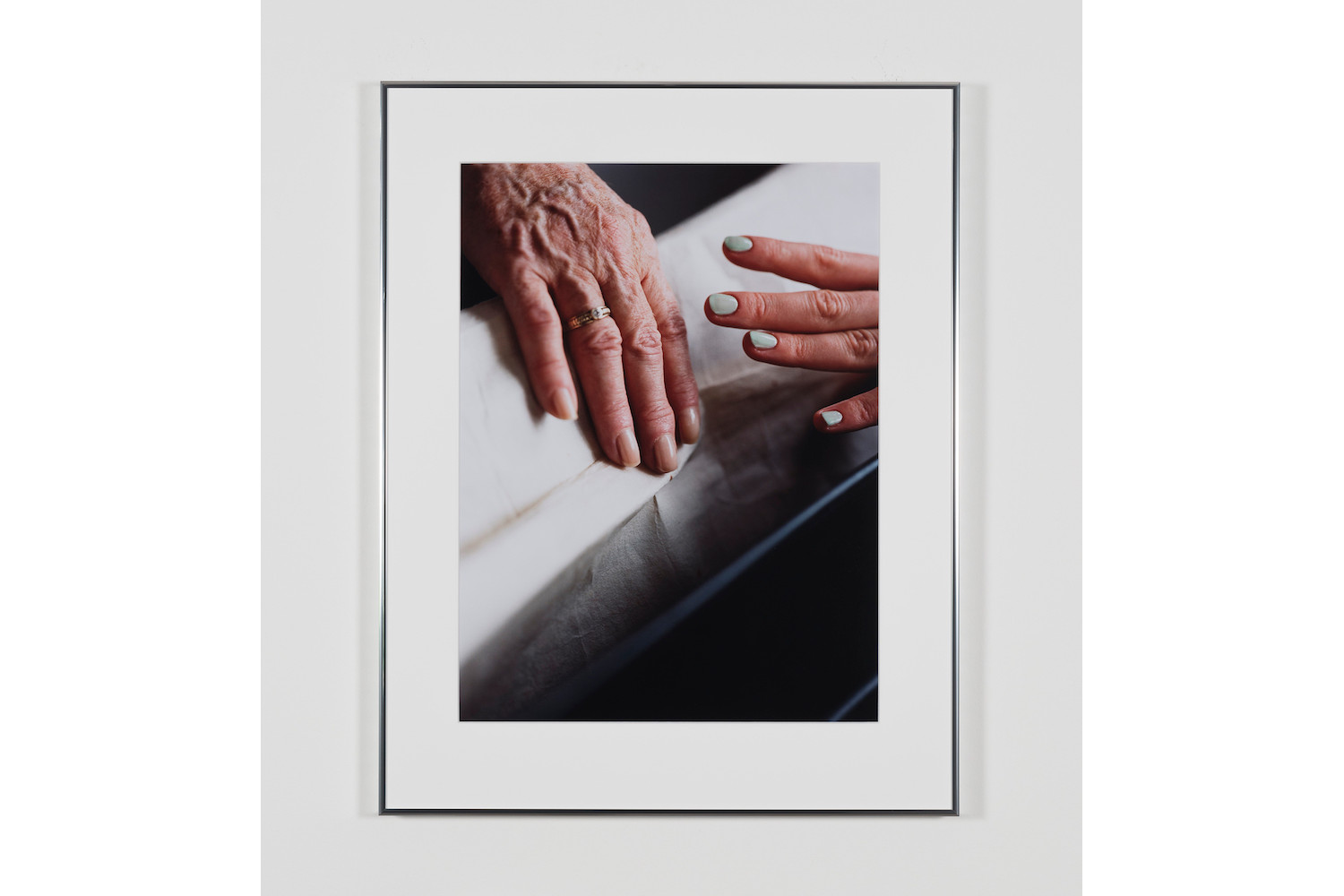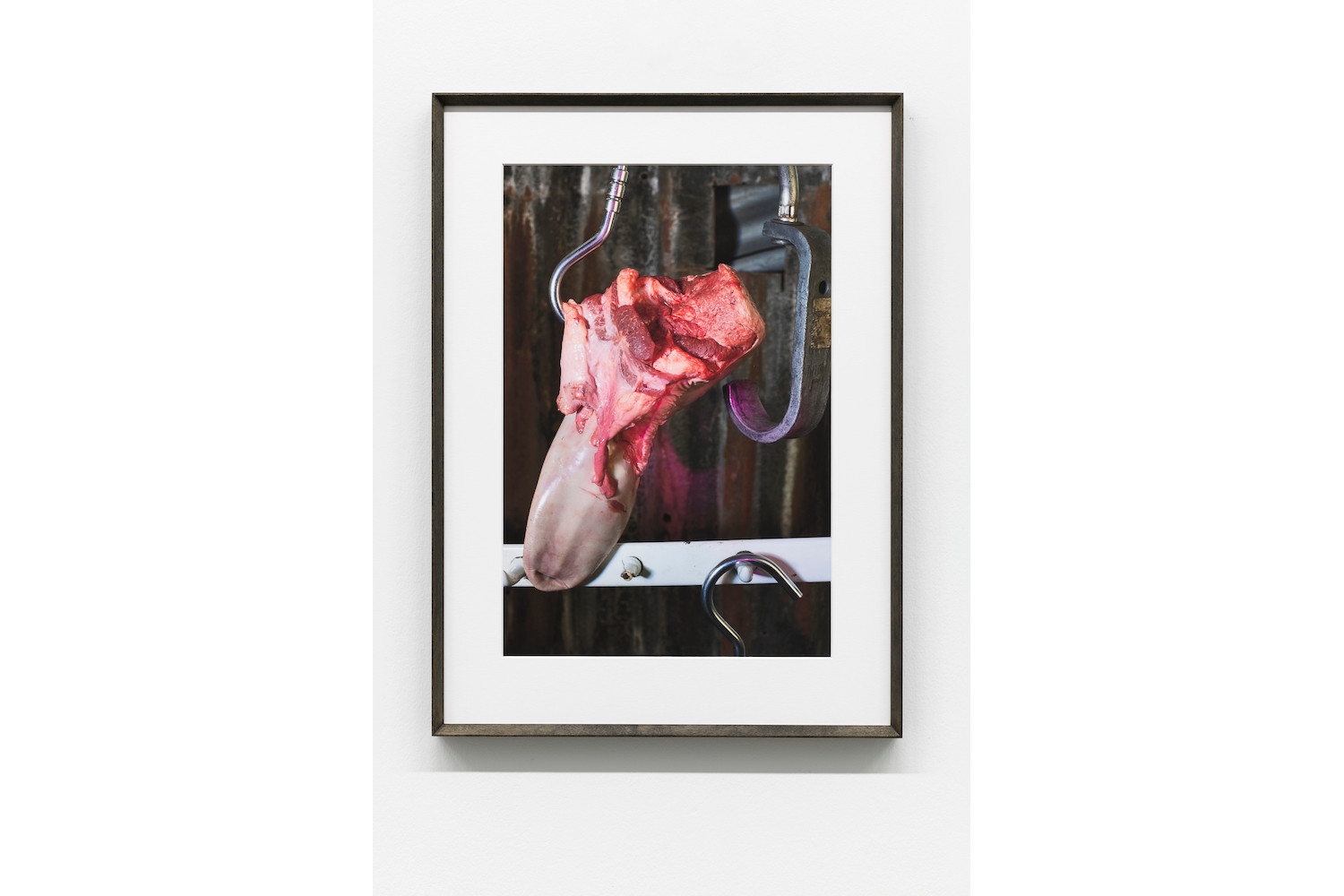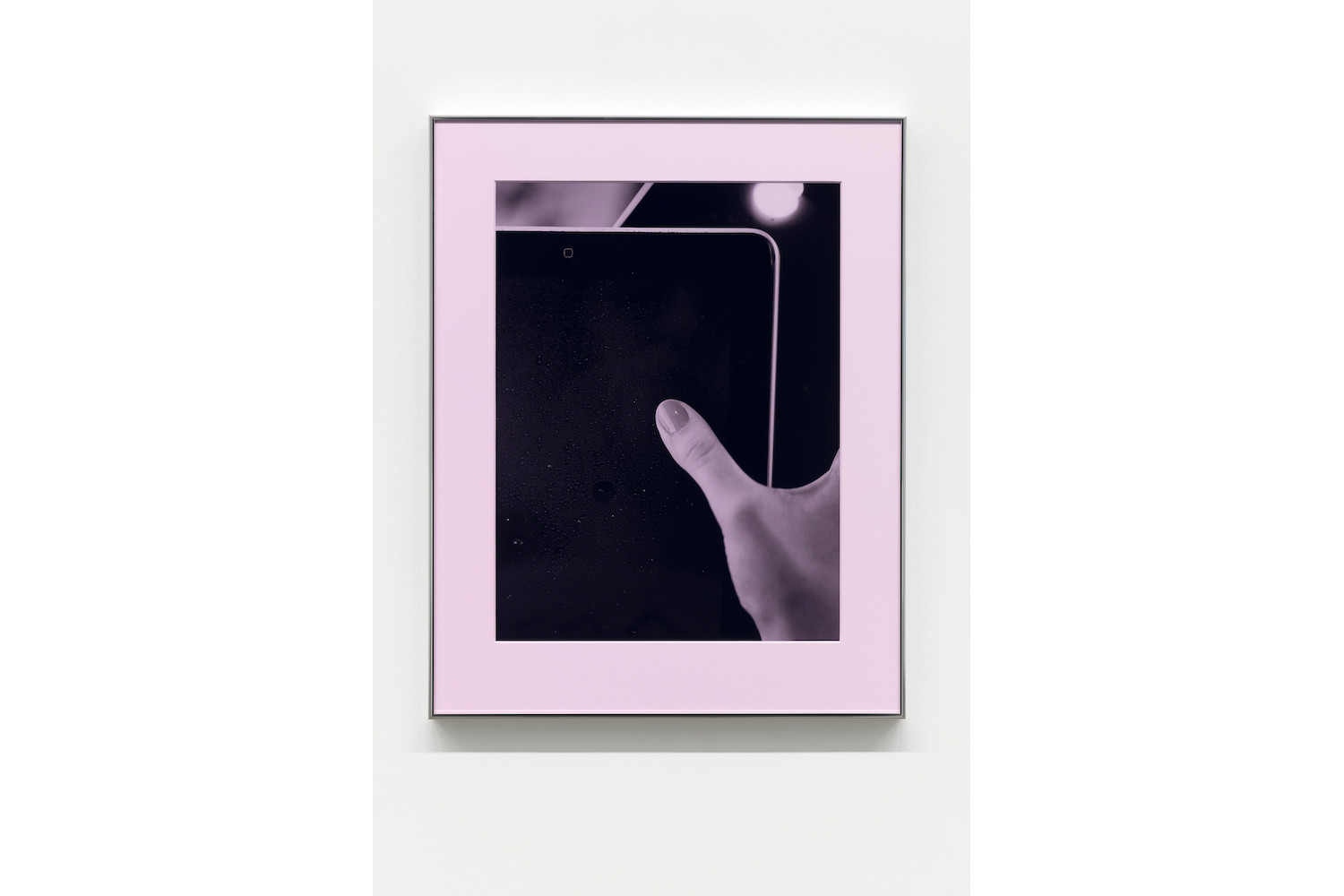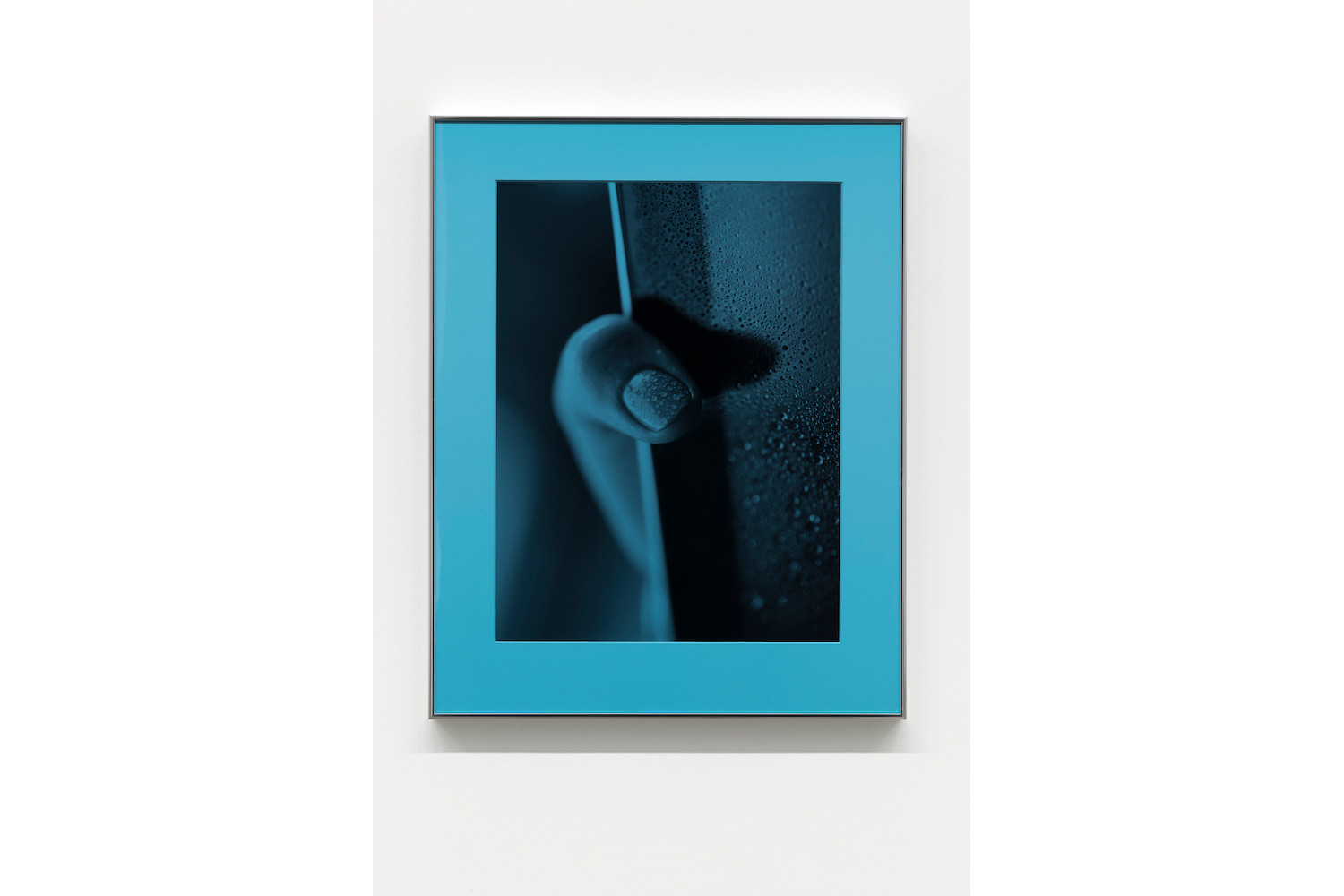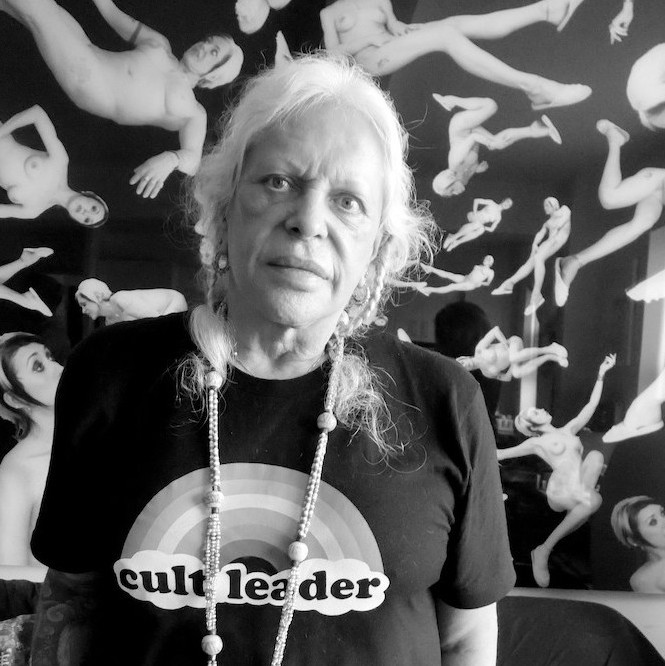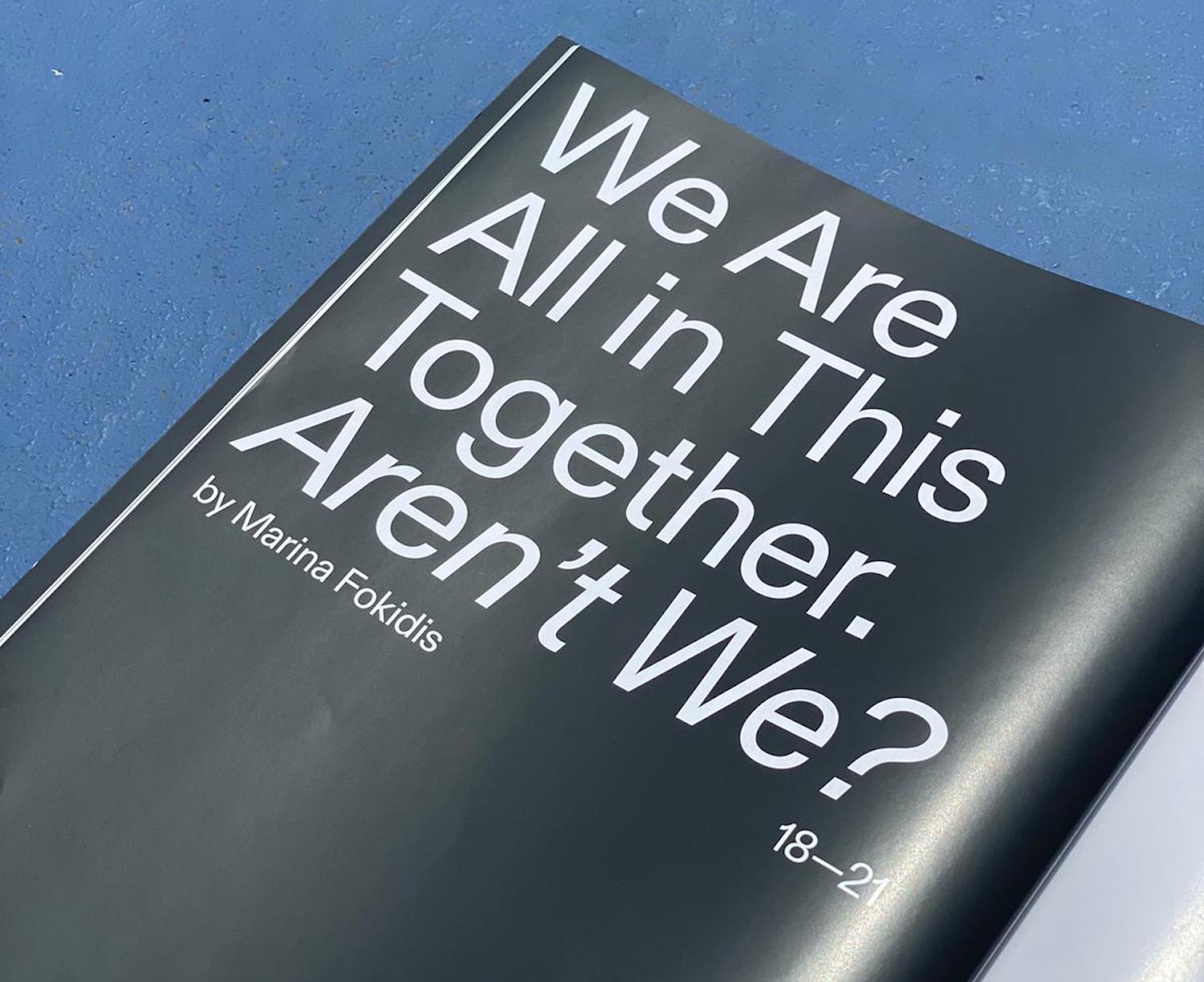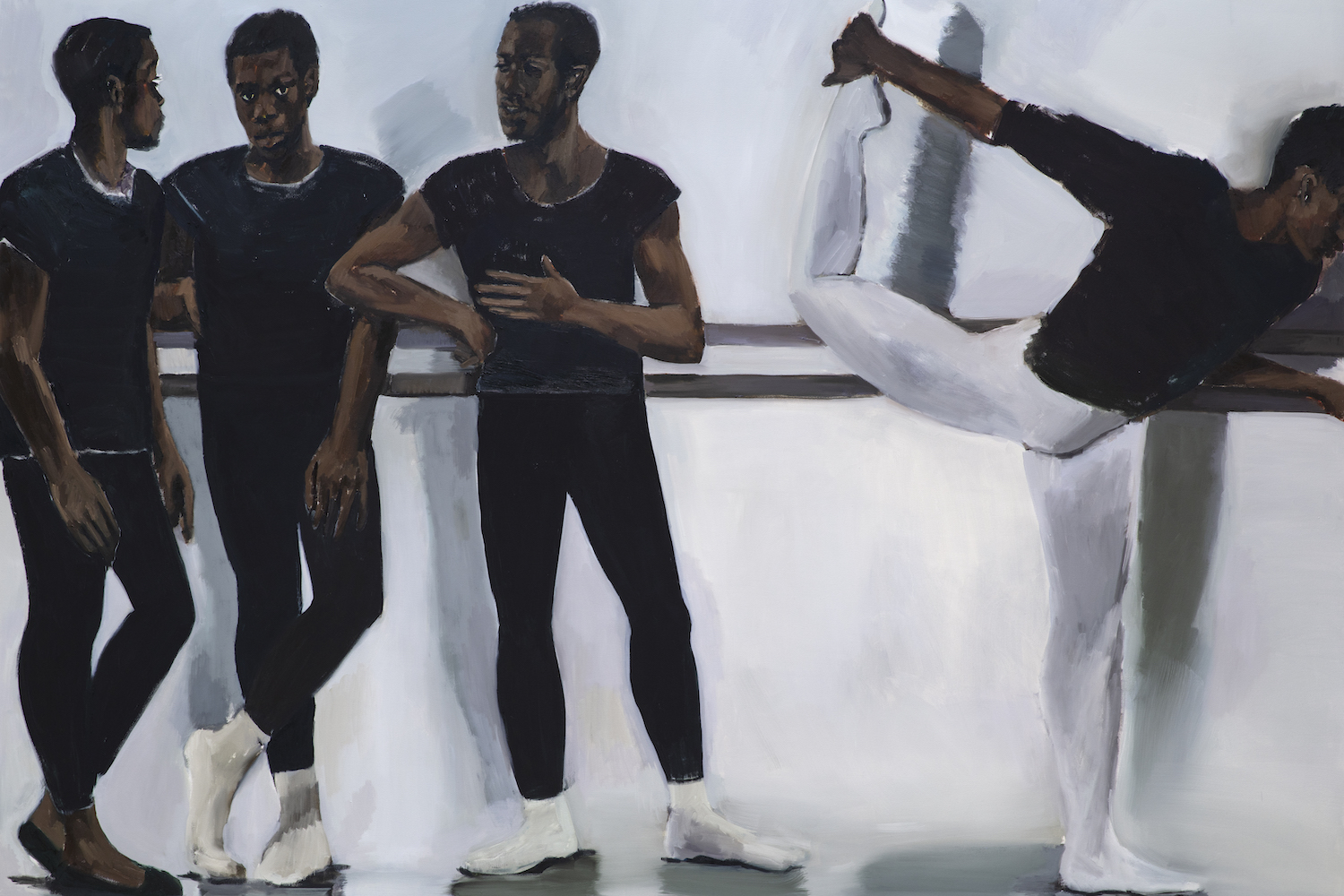Lines and pores, palms and fingertips. A scene of swirling galaxies and black holes evinced by the body of nature — rocks marked by time upon which constellations of lichen grow, water pooling within engraved concentric circles. Josephine Pryde’s UV digital print Exterior, Night, Day (2020), after which this show at Galerie Neu is titled, combines close-ups of rock carvings to cover the façade of gallery. Rich pitted blues contrast with white speckles, at once evocative of cosmos, landscape, and body. Pryde photographed these forms in Northumberland (UK), Galicia (Spain), and Portugal, capturing the indecipherable language of our Neolithic predecessors — markings reminiscent of fingerprints, which remain beyond comprehension.
The artist often mines fashion photos and adverts to consider how photography depicts our world and molds our capacity for cognition and how thought is shaped by our senses. She also questions conditions of display — how presentation might be intrinsic to reception. During a pandemic of social distancing, the exhibition’s layout plays with dualities like surface/interior. Visible through an outside window is The Tongue of Donald J. Trump (2020), in which an animal’s tongue hangs from a butcher’s hook (meat hooks have also been featured in Pryde’s previous works). Red raw flesh at the point of rupture contrasts with pink papillae; tongue flaccid, severed from sound into impotence. Taking its compositional cues from the Impressionist Gustave Caillebotte’s Calf’s Head and Ox Tongue (c. 1882), and contrasting with the textural sensuousness of the façade’s rock shapes, Pryde suggests that while we long to understand some languages, other words are better left unspoken, skewered into limp lifelessness.
And what of the building’s inside, beyond surface, skin, texture? Using just half of the gallery’s back room, into which she moved the staff’s desk, new photographs from Pryde’s seductively pristine and meticulous “Für Mich” series (For Me, 2014/2020) are glazed with colored plexiglas. The setup suggests acts of watching and being watched (touching and being touched). Intimacy. In the images, close-ups of hands trace different materials. Thumb, Pad (Seagreen Filter) (2014/2020), sees a thumb is in perfect focus, skin cell contours colored by a luscious filter. Beneath these layers of pigment the works, of course, look different: glossy glass telling a story. Pryde asks: Where lies “truth”? Seen as a group, sign and body language come to mind and compared to the exterior canopy, Pryde seemingly points to how humans have utilized language from the start. Is that time really so different from this time? Identity bears a relationship to yesterday; there are repetitions from which we might learn, the good and the bad, if only we would stop speaking and take the time to listen.

